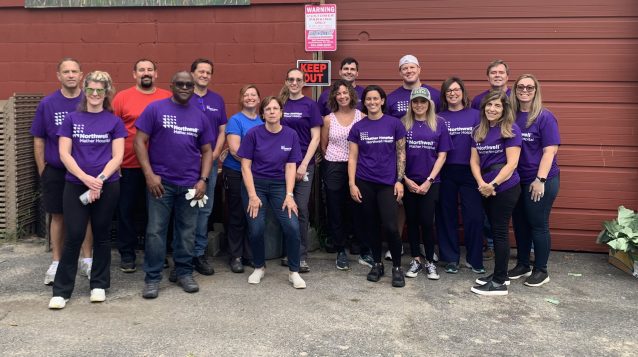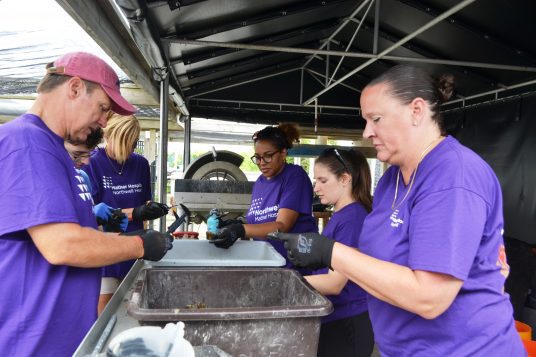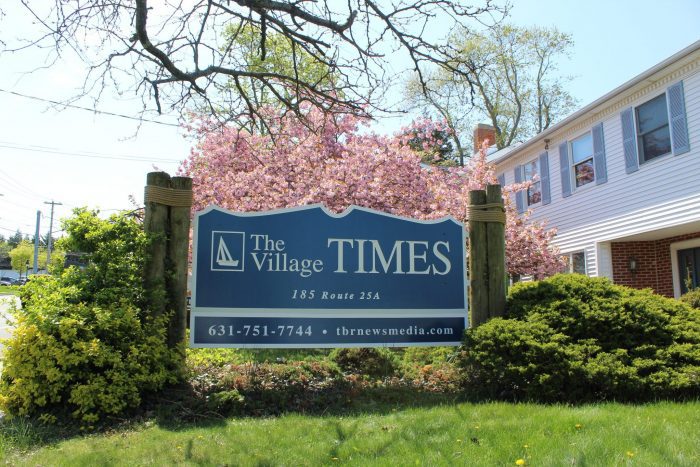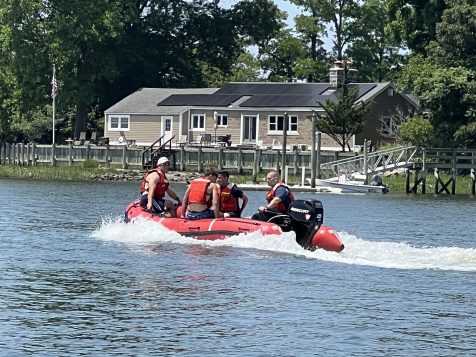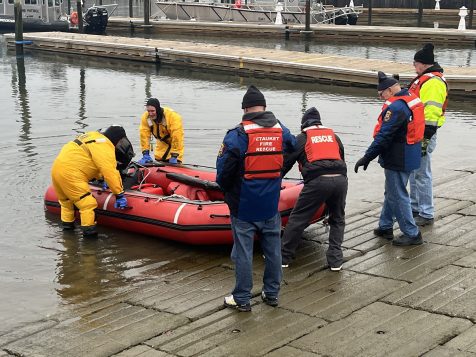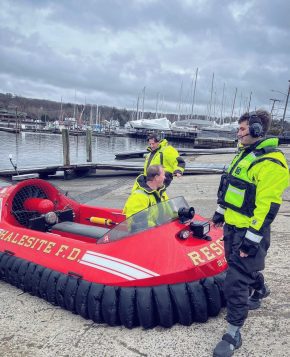By Daniel Dunaief
Fire departments around Suffolk County are preparing, training and gathering equipment for the kinds of water emergencies that can require rescues from homes, cars or buildings.
Amid the sudden and intense rains that damaged parts of Stony Brook and surrounding areas, fire departments received far higher than average numbers of calls for help from residents.
“People used to tell stories [about heavy storms and flooding] every few decades,” said David Sterne, District Manager in the Setauket Fire District. “Now, we’re seeing it every few years.”
Fire departments including in Stony Brook, Setauket, Commack and Port Jefferson responded to dozens of calls for help through the evening as towns like Stony Brook received more than three times the normal amount of rain for the month of August in the hours after midnight.
“We handled over 54 alarms” on the overnight of the storm, said Sterne. The department, which encompasses a 28 square mile district, responds to an average of three calls per night. “It was pretty obvious that it was more than a regular rainstorm.”
The dispatchers, who handle calls for Setauket, Stony Brook and Port Jefferson, received over 70 alarms among the three departments.
Amid the potential for water rescues and emergencies that could occur far more frequently than in the past, fire departments and county officials have increased training and added various types of equipment that can offer assistance during water emergencies.
“We’ve got to be prepared for everything,” said Chief Dominic Spade of the Halesite Fire Department in the Town of Huntington. Halesite added a hovercraft about three years ago that doesn’t use a submerged engine and can travel through shallow waters to homes or stranded motorists.
Additional training
In anticipation of additional water-related emergencies, Suffolk County firefighters and rescue teams have been training for sudden heavy rains and storms.
The county started offering two new courses in water rescue this year: Water Rescue Awareness and Surface Water Rescue. Since June, the Suffolk County Fire Academy has trained 258 firefighters, according to Rudy Sunderman, Suffolk County Fire, Rescue and Emergency Services Acting Commissioner.
“Responders from Stony Brook, Rocky Point, and Port Jefferson, areas that were hardest hit by last week’s storms, were among many members who took the training,” Sunderman explained in an email.
The Suffolk County Urban Search and Rescue Team, which is made up of volunteer first responders capable of deploying up to 40 members, was established in 2012 and was created “to locate, extricate and provide immediate medical treatment to victims trapped in collapsed structures, and to conduct other life-saving operations,” Sunderman added.
Over the last three months, the USAR Team has focused specifically on water rescue incidents.
In addition, numerous local fire departments have improved their water rescue capabilities.
The Setauket Fire Department has sent members of its staff to Oriskany in New York, where people from all over the Empire State receive training for specific types of rescues.
Oriskany has “all types of specialized training,” said Sterne. The facility has a simulated town that they can flood, where rescue teams practice open and swift water responses.
“In the last four to five years, we’ve been sending people on a more regular basis” to Oriskany, said Sterne. “It’s definitely becoming more normal to have massive flooding in certain areas.”
The rescue teams that can’t attend the simulations in Oriskany still benefit from the classes their colleagues take.
“People come back and impart what they learned,” said Sterne. “When making split second decisions, it’s effective” to have considered various emergency measures during flood or surging waters.
Water rescues involve conditions that don’t often have the same challenges as rescues during snowstorms or other weather-related emergencies.
Heavy snow can cover signs or other sharp objects, while people maneuvering through flood waters can tear their protective gear or hurt themselves when they bump into or step on something they can’t see through dark waters.
“Broken street signs and sharp objects might become a real hazard to responders,” said Sterne. “Floor waters can, in many ways, become more dangerous.”
Emergency officials warned about the dangerous combination of water and electricity.
“One of our biggest concerns is when electricity mixes with water,” Sterne explained. “In those situations, our primary focus is to remove people from unsafe conditions when there is flooding mixed with live electricity.”
When a primary or secondary wire falls into water, “it’s a dangerous proposition” and “everything is charged,” said Spada.
Even metallic yellow lines on the street can become charged if power is still flowing into a submerged wire.
Advice for residents
Fire officials offered several pieces of advice for residents.
For starters, don’t enter a basement or other flooded areas without ensuring that electricity has stopped in the area.
Additionally, residents should not venture out onto the road unless it’s for some essential reason.
“Stay put,” Sterne urged. “Don’t become a liability yourself.”
That’s also true during snowstorms, as people leave their homes and block snow plows from efforts to clear the road.
Families should consider emergency locations to congregate, with back up plans if and when they need to leave the house.
Residents also might want to have an accessible bag with flashlights stocked with new batteries, clean clothing and jackets in case an emergency requires an evacuation, Spada suggested.
People trapped in cars should stay there until it’s not safe, Spada suggested. If necessary, they can climb onto the roof of the car and wait for a rescue.
Effective emergency response
Spada was impressed with the quick thinking and acting on the part of several fire departments in response to the stalled, heavy rainstorm.
“Stony Brook did a great job,” Spada said. “Sometimes, you need to improvise in these rescue situations.


